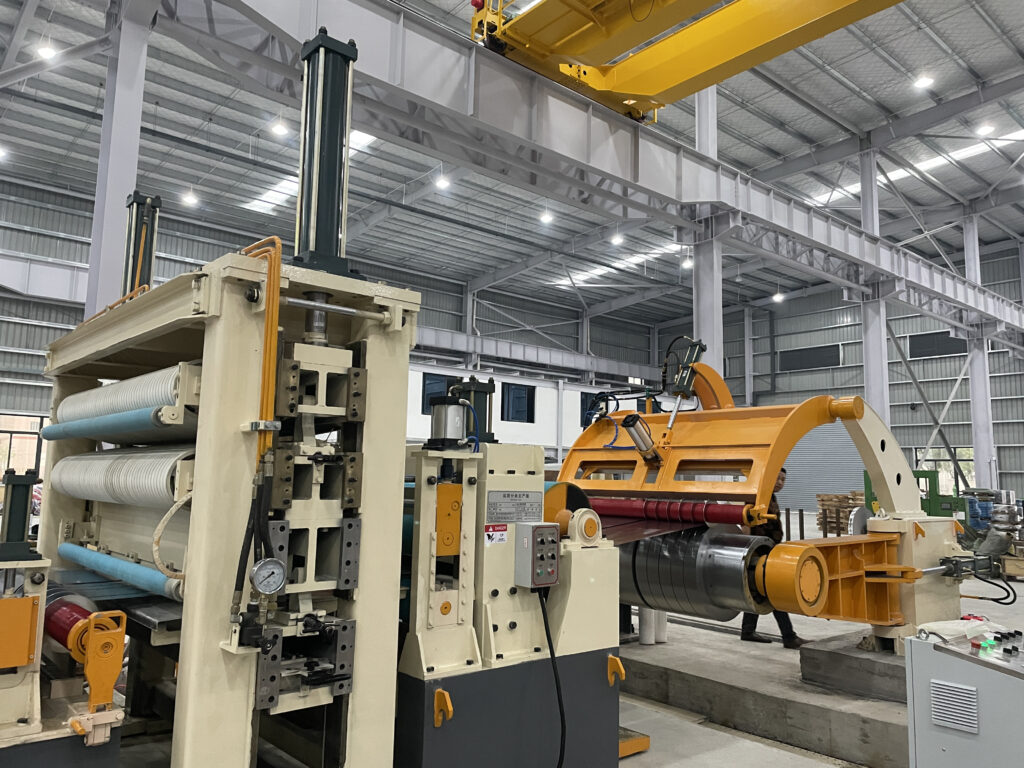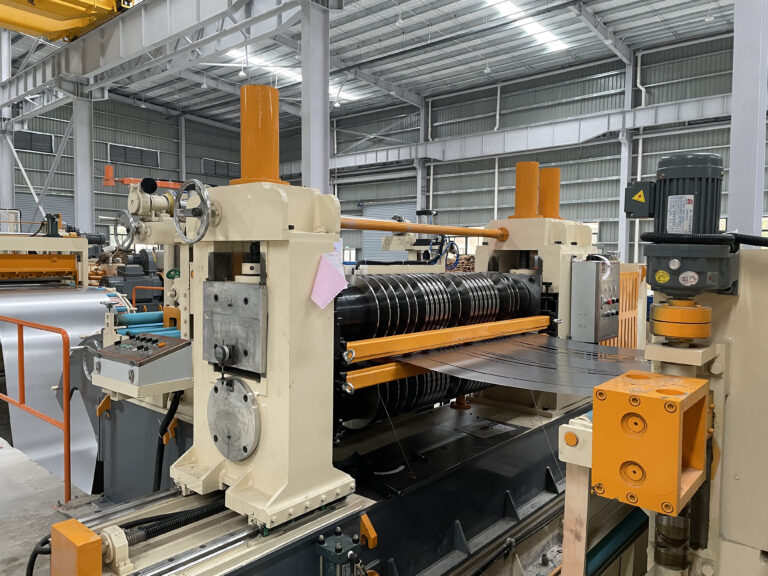Common Wear Parts in Slitting and Flatbed Machines: Maintenance and Replacement Tips
Implementing these data-backed maintenance regimes—coupled with MaxdoMachine’s engineered wear-resistant components—transforms routine upkeep into a strategic advantage.
In high-throughput metal processing environments, spindle bearings and slitting knives account for over 70% of unplanned maintenance events, directly impacting uptime and cut quality. Proactive lubrication regimens using NLGI 2 EP grease every eight operating hours and the adoption of MaxdoMachine’s diamond-coated slitter knives can cut unplanned stops by up to 35% while preserving edge tolerances within ± 0.02 mm. A comparative analysis shows that custom ISO 15243-rated bearings and OEM diamond-coated blades, despite carrying a 20–30% premium, deliver lifecycle cost savings of roughly 25% through extended service intervals and reduced scrap rates.
Machine Specifications Overview
A precise understanding of each MD-series model’s capacity and power profile is essential for tailoring maintenance and spare-parts stocking.
| Model | Working Width (mm) | Thickness Range (mm) | Coil Weight (t) | Speed (m/min) | Total Power (kW) |
|---|---|---|---|---|---|
| MD-850 | 300–820 | 0.3–3.0; 1.5–6; 2–8; 4–12 | 10–35 (customizable) | 1–60 | 93 |
| MD-1350 | 300–1 350 | 0.3–3.0; 1.5–6; 2–8; 4–12 | 10–35 (customizable) | 1–80 (thick→slow) | 136 |
| MD-1650 | 300–1 650 | 0.3–3.0; 1.5–6; 2–8; 4–12 | 10–35 (customizable) | 1–80 (thick→slow) | 294.5 |
| MD-2200 | 300–2 150 | 0.3–3.0; 1.5–6; 2–8; 4–12 | 10–35 (customizable) | 1–250 | 422.5 |
Slitting and Flatbed Mechanics
Roll-slitting lines unwind coil stock through closed-loop load cells that regulate tension within ± 2% of setpoint, ensuring strip stability and preventing edge taper. Rotary knives shear material into precise widths, while optical edge-guide sensors maintain lateral alignment within ± 0.05 mm at line speeds up to 250 m/min. Flatbed machines employ reciprocating shear heads and hardened stripper plates; synchronized feeding and punch timing deliver burr-free blanks with consistent cycle times.

Key Wear Components
Bearings and blades endure the highest stress in both slitting and flatbed operations:
- Bearings: Angular-contact and deep-groove bearings (ISO 15243) face fatigue from misalignment and lubricant contamination; proper greasing extends fatigue life by 20% and prevents raceway brinelling.
- Slitter Knives: Tool-steel knives require bench regrinding after ~ 50 km of coil travel to restore the 0.02 mm edge radius; diamond-coated versions last 1.5× longer under identical conditions, reducing downtime by 30%.
- Stripper Plates: Wear in flatbed punch assemblies manifests as flange curling when clearance surpasses 0.05 mm; scheduled plate replacement prevents part ejection failures.
Maintenance Protocols
A regimented inspection and servicing schedule balances equipment availability with part longevity:
- Daily Checks
- Monitor bearing housing temperatures (< 60 °C) and decibel levels (< 70 dB(A)) to detect lubrication starvation.
- Visually inspect knives under 10× magnification for chips or burrs, flagging for regrind or swap.
- Scheduled Service
- Apply NLGI 2 EP grease to all bearings and pivot points every eight operating hours; flush grease lines semi-annually.
- Conduct blade regrind at 50 km (tool-steel) or 75 km (diamond-coated), adhering to factory-specified edge profiles.
Replacement Decision Matrix
| Criterion | Standard Parts | Custom OEM Parts |
|---|---|---|
| Unit Cost | 20% lower | 30% premium |
| Downtime Risk | Higher failure rates | 35% fewer unplanned stops |
| Precision Tolerance | ± 0.03 mm after regrind | ± 0.02 mm maintained |
Case Studies and ROI
A Southeast Asian service center retrofitted MD-1650 spindles with ISO 15243 bearings, slashing bearing-related stoppages by 35% and boosting throughput by 12% within three months. A European fabricator’s switch to diamond-coated slitter knives yielded a 2.5% material-yield improvement—equivalent to \$50,000 annual savings—achieving payback in 18 months via reduced scrap and longer service intervals.
Installation and Troubleshooting
Accurate setup underpins consistent performance:
- Foundation Leveling: Achieve ± 0.5 mm flatness across base plates using laser levels.
- Shaft Alignment: Align unwind/rewind shafts for coaxial run-out < 0.02 mm with laser trackers.
- Edge Wander: Realign photo-eye sensors to ± 0.05 mm and verify air-bearing seals to eliminate seal leaks.
- Blade Chatter: Ensure arbor run-out < 0.01 mm and torque arbor nuts to 450 N·m.
- Bearing Noise: Flush grease circuits and inspect raceways for pitting; replace bearings when indentations exceed 0.001 mm.
Conclusion
Implementing these data-backed maintenance regimes—coupled with MaxdoMachine’s engineered wear-resistant components—transforms routine upkeep into a strategic advantage. Fabricators secure higher equipment availability, consistent slit-edge quality, and optimized life-cycle costs, ensuring competitive performance in demanding metal-processing operations.




